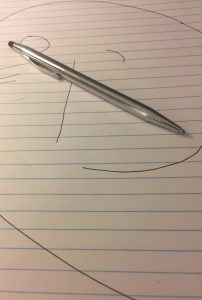The Tasting Menu Reads Like a Novel
I haven’t read many books this past year, but I’ve read countless menus. I’ve learned something about storytelling through eating.
Eating from a tasting menu at a fine dining restaurant is like reading a novel: it’s divided into chapters that linger and carry on into one another. The experience will begin and build and end.
It begins with the menu.
A well-written menu is withholding many key pieces of information. Many fine dining restaurants list only the ingredients of the dish with no words for preparation or hints toward texture, or flavor of the ingredient. The cooks and chefs I work with tell me this is intentional. No jargon, no nonsense, nothing for guests to wonder about. The work done in the kitchen should be mysterious. I am reminded of Roland Barthes’ “The Death of the Author,” as I eat delicious food while knowing nothing of who prepared it. People should only question the craft if the food is so divine that it seems impossible. The well-written menu will leave a guest guessing and hungry.
The amuse-bouche, French for “mouth amuser,” lights up the palette. In a book it is the prologue, or even a review written by Maya Angelou printed in italics on the first page. It is what reads,this is going to be interesting, this is going to be good.It is simple in its focus: to prepare. It touches on the range of flavors, hints at reach and ability.
The first course is designed to be light on its feet. It introduces flavors and makes a statement. It is a thesis statement. The first course establishes voice, so to speak.
Some tasting menus will have ten courses, others just three. The basic parts do not change, they may just be drawn out. Either way, there’s a beginning, middle, and end. The entrée courses are plot peaks, climaxes. They are typically rich, flavorful proteins. The main components may be familiar: lamb, beef, fish. A good restaurant will use this stability and tradition to play off of and be creative. In writing, it is the classic plot arc, where toward the end of the book two characters might learn they are in love with one another, or where a character hits rock bottom and has to come to terms with his situation. The story is familiar but is special in its context.
The dessert (I think many would agree with me) is the best part. Some flavor from the beginning of the meal lingers and appears again. Fennel from the first course appears dressed in fruit compote. Motifs dance on the tongue in harmony. Dessert can’t be too sweet. There may be many textures and they must play well together.
When I leave the restaurant: get up out of the seat, stretch my legs, and refocus my eyes. I adjust to my immediate reality. I process¾I talk to my dining companion about the details or I just think about them. My senses have experienced new combinations of colors, smells, tastes, and feelings and my mind has yet to fully acknowledge them.
__________________________









